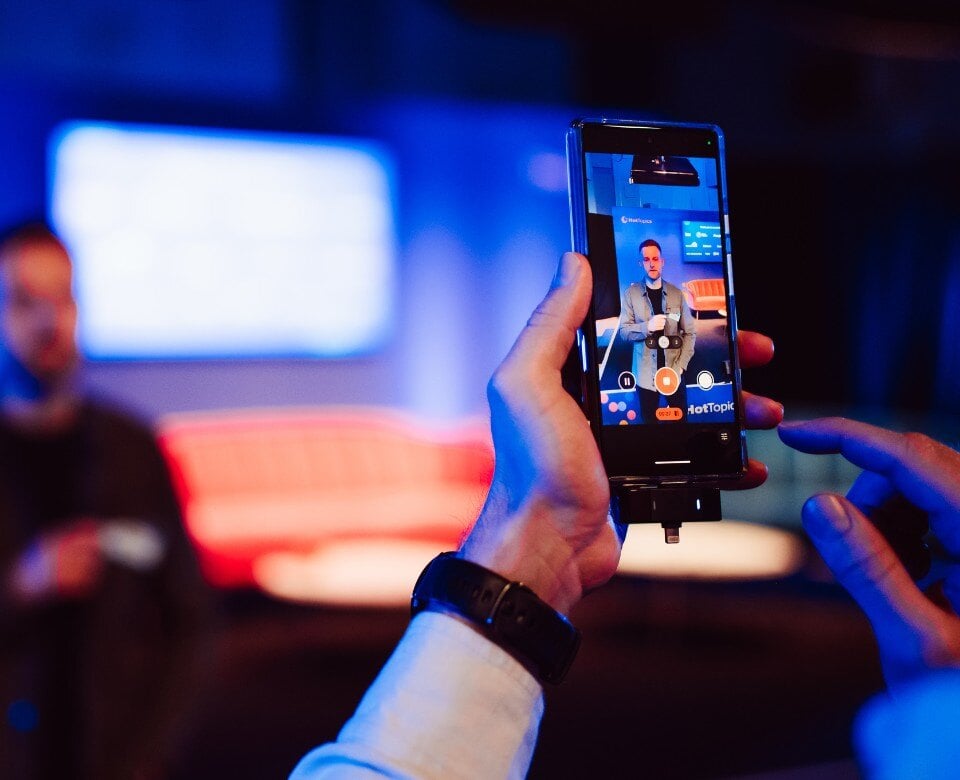
GenAI and workplace collaboration
The workplace has undergone a seismic shift in recent years, driven by hybrid work, evolving employee expectations and rapid technology advancements. As organisations grapple with the complexities of remote and in-office work, AI, including generative AI, has emerged as a potential game-changer, promising to streamline communication, automate workflows and enhance productivity.
But can AI truly fix workplace collaboration, or are we expecting too much from the technology?
A recent HotTopics C-Suite Exchange, where technology leaders meet virtually to meet and debate a key business topic, allowed for peers to share experiences and lessons. In collaboration with Shure, the Exchange highlighted a nuanced reality: while AI can support collaboration in important ways, its success depends on intentional implementation, cultural adaptation and a reimagining of work processes. And then there are the very human elements that AI cannot solve—at least yet.
Read the article below to learn more.
The AI collaboration paradox: empowering or overwhelming?
AI is already integrated into the workplace in many ways, from automated meeting transcriptions and real-time translations, to chatbots handling routine inquiries. Many organisations have leveraged AI to address pain points like knowledge retrieval and document management. However, while AI can improve certain types of collaborative processes, it also raises new complexities that business leaders must navigate.
1. The ROI challenge: Proving AI’s value in collaboration
Leaders on the call were optimistic about AI’s ability to enhance workplace collaboration, yet measuring ROI remains a major challenge. Unlike traditional productivity tools, AI’s benefits—such as faster decision-making, reduced cognitive load and improved employee well-being—are difficult to quantify in financial terms.
Some organisations have adopted a pragmatic approach to AI investment, rolling out tools like Microsoft Copilot or enterprise-grade AI assistants in pilot phases, tracking adoption before committing to full-scale deployment. Others have seen success by targeting AI at specific bottlenecks, such as automating document processing in industries like logistics, where reducing manual data entry has a clear financial impact.
Key takeaway: AI’s value should be measured beyond cost savings. Enhanced decision-making, reduced employee burnout, and improved knowledge-sharing are equally critical metrics.
2. AI’s role in bridging hybrid work gaps
One of AI’s most immediate impacts has been reducing friction in hybrid work environments. AI-powered tools can summarise meetings, generate follow-up actions and provide real-time language translation, ensuring that globally distributed teams stay aligned. In one instance, AI-enhanced video or remote meetings were deemed as more productive than in-person sessions.
However, some leaders cautioned that AI alone won’t fix fragmented collaboration. AI-generated summaries and automated responses are only as useful as the structured conversations and well-defined workflows that support them. Poorly run meetings remain inefficient, even with AI transcription tools in place.
Similarly, the reported benefits of in-person work, from serendipity in knowledge exchange to informal mentoring between managers and teams, remain immune to AI “improvement”.
Key takeaway: AI works best when layered onto strong collaboration practices. Leaders should focus on meeting discipline, structured workflows and digital workplace strategies to complement AI solutions.
3. The hidden impact of AI: Inclusion and knowledge sharing
A lesser-discussed but significant benefit of AI in collaboration is its impact on workplace accessibility and inclusion. AI tools have been a game-changer for neurodiverse employees, we heard, helping those with dyslexia or communication difficulties express themselves more effectively through AI-assisted writing tools over email or group project work. Similarly, AI-powered knowledge bases allow junior employees to access critical company information without the fear of “asking a stupid question.”
However, organisations must also address AI’s limitations and biases.
AI models still struggle with contextual understanding, hallucination and the need for human oversight. Additionally, as AI becomes more embedded in decision-making, organisations must ensure responsible use and robust data governance to maintain trust in AI-driven insights.
Key takeaway: AI enhances workplace inclusion but must be carefully managed to avoid misinformation and biases. Leaders should invest in AI literacy and governance frameworks.
Take-home insights
As AI becomes a workplace staple, leaders must approach adoption strategically. Here are the key considerations:
✔ AI cannot replace human collaboration—it amplifies it. Organisations should use AI to enhance workflows, not replace the need for structured team engagement.
✔ Measure AI’s impact beyond cost savings. Track metrics like employee well-being, decision-making efficiency and knowledge accessibility alongside quantitative, financial ROI.
✔ Avoid the AI “black box” effect. Employees need to understand how AI-generated insights are formed to build trust and avoid blind reliance.
✔ AI democratises knowledge, but governance is critical. While AI helps employees find information faster, strong data management and security protocols must be in place.
✔ AI adoption requires culture change. Leaders should prioritise AI education, training and iterative implementation to drive meaningful adoption.
Closing thoughts: A partner, not a silver bullet
AI, particularly the advanced generative versions, presents a transformative opportunity for workplace collaboration, but it is not a one-size-fits-all solution. AI thrives in environments where collaboration is already well-structured and falls short when expected to replace human decision-making and engagement. Given the investment required for AI, falling short can be a serious misstep for leaders already on tight budget reigns.
For leaders, the challenge is not whether to adopt AI, but how to do so in a way that enhances productivity, inclusivity and long-term business success. AI’s role in collaboration will continue to evolve and the organisations that are embracing experimentation while maintaining a human-first approach will be the ones that reap the most value.
Join the Collaboration Culture community
HotTopics, in partnership with Shure, is proud to introduce the Collaboration Culture community, providing a platform for technology leaders to share insights, discuss strategies and find practical solutions for enhancing productivity, bridging the gap between remote and in-office work and meeting the diverse needs of today’s workforce.
SUBMIT A COMMENT
RELATED ARTICLES
Join the community
To join the HotTopics Community and gain access to our exclusive content, events and networking opportunities simply fill in the form below.
